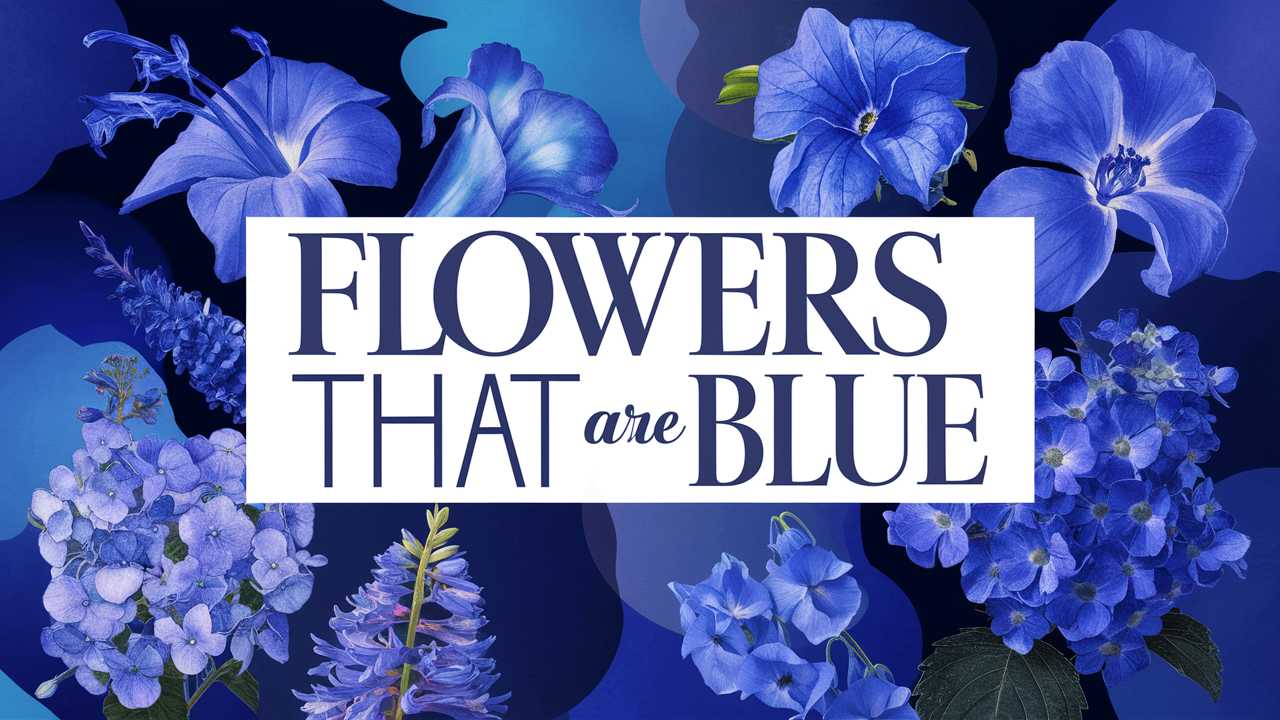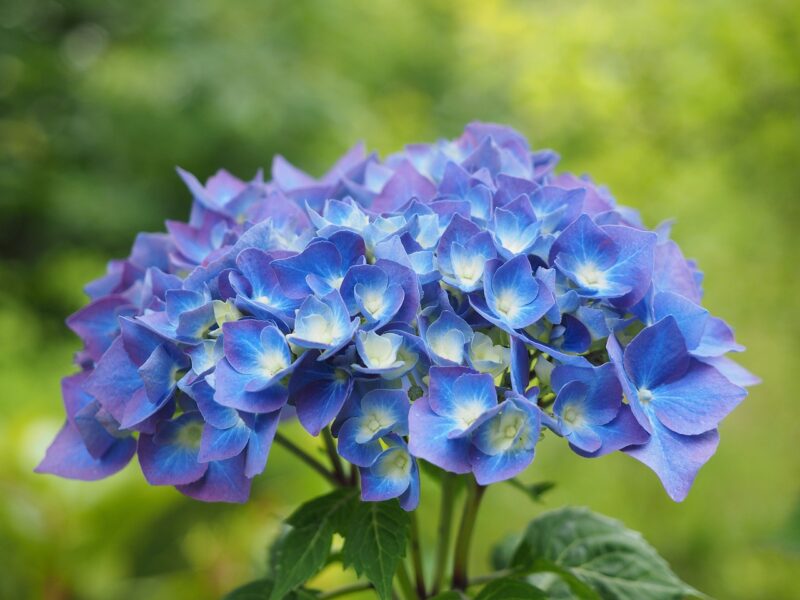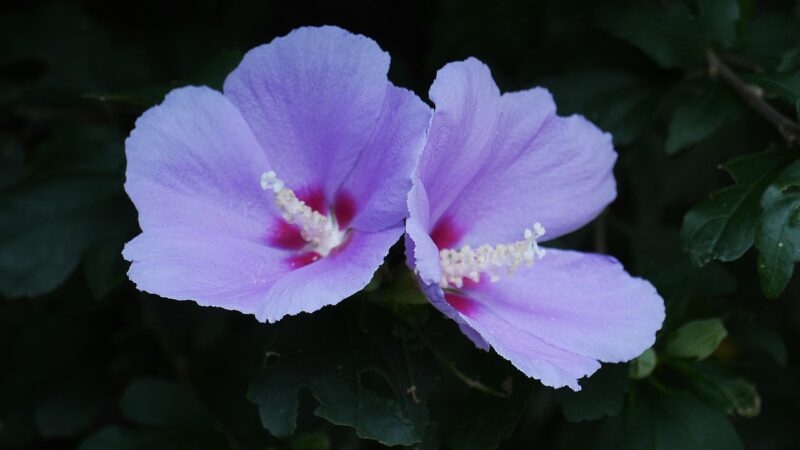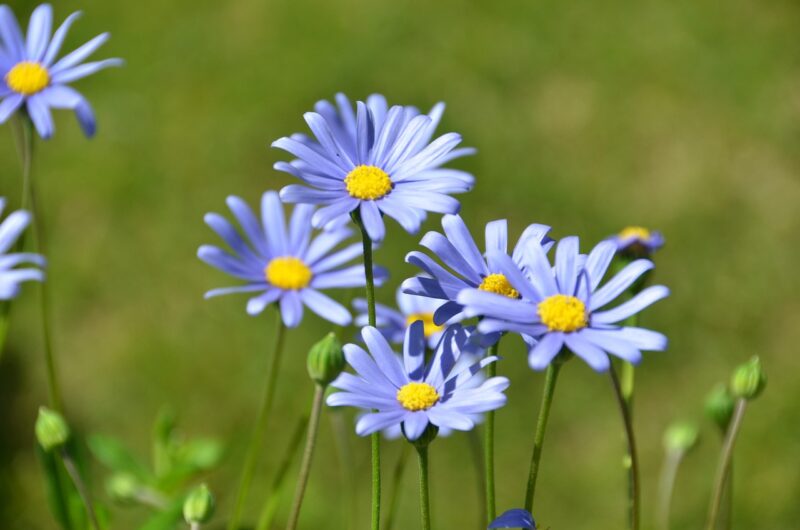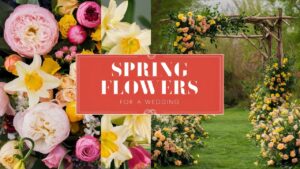In this post, we’ll explore a variety of blue flowers, delving into their characteristics, growing conditions, and the meanings often associated with them. Join me on this floral journey, as we uncover the stunning shades of blue that nature has to offer.
Hydrangea
Hydrangeas are one of the most popular garden flowers and come in an array of colors, including a breathtaking shade of blue. The color of the hydrangea blooms can shift depending on the soil’s pH levels, with acidic soils promoting blue hues. These perennial shrubs are known for their large, spherical flower clusters that can be used to create stunning landscapes, be it in yards, gardens, or even in pots.
Beyond their aesthetic value, hydrangeas are relatively easy to care for. They thrive in partial shade and require consistent moisture, making them perfect for regions with a temperate climate. Additionally, they can attract butterflies and other pollinators, adding liveliness to your outdoor spaces. When it comes to their symbolism, hydrangeas are often associated with gratitude, understanding, and heartfelt emotions, making them a thoughtful gift for a loved one.
Salvia
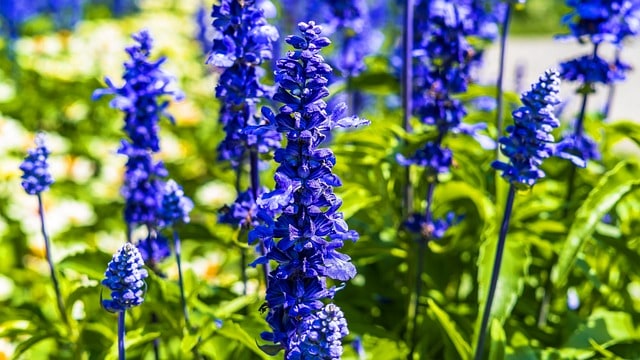
Salvia, or sage, is a diverse genus that includes several species of flowering plants. Among them are vibrant blue varieties that are highly sought after in perennial gardens. Salvia blooms in spires, offering a striking contrast to green foliage, and functions wonderfully as a border plant or centerpiece in any garden setting.
These drought-tolerant flowers thrive in sunny spots and well-drained soil, making them an excellent choice for low-maintenance gardens. Known for their ability to attract hummingbirds and butterflies, salvias enrich the biodiversity of your outdoor space while providing a stunning visual appeal. Beyond their beauty, salvias have a rich historical use in herbal medicine. In various cultures, they’re associated with healing and purification, further enhancing their allure.
Lily Of The Nile

The stunning blue flowers of the Lily of the Nile, or Agapanthus, are show-stoppers in gardens around the world. Each cluster of flowers emerges atop tall stems, creating a waterfall of blue globes that sway gently in the breeze. Native to South Africa, these plants are hardy and thrive in many climates, making them popular among gardeners.
Lily of the Nile is exceptionally versatile; it can be planted in borders, containers, or even as a standalone feature. They flourish in full to partial sun and prefer well-draining soil, where they receive adequate moisture without becoming waterlogged. Interestingly, these flowers often symbolize love and devotion, making them a poignant inclusion for bouquets in weddings or significant celebrations.
Rose Of Sharon
Rose of Sharon (Hibiscus syriacus) boasts beautiful blue flowers that can bring a serene touch to any garden. This deciduous shrub flowers throughout the summer, showcasing large, delicate blossoms that can vary in color but often include striking blue tones. Its ability to bloom continuously makes it incredibly appealing for those seeking vibrant summer gardens.
This hardy plant is adaptable, thriving in various soil types and requiring minimal maintenance. An essential benefit of Rose of Sharon is its capacity to attract pollinators, like bees and butterflies, while providing a touch of elegance to the landscape. The flowers themselves carry messages of love and beauty across different cultures, adding to the plant’s rich cultural significance.
Cornflower
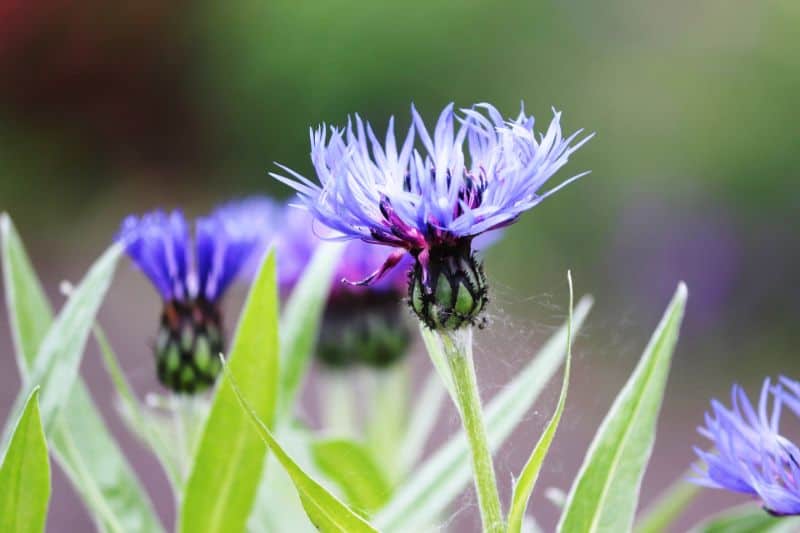
Cornflower, or Centaurea cyanus, is an enchanting wildflower known for its striking blue petals and frequent use in floral arrangements and gardens. Originally found in Europe, this annual plant thrives in sunny locations and prefers well-drained soil. Cornflowers are admired not only for their color but also for their ability to attract pollinators and beneficial insects.
The blooms typically come in a variety of shades ranging from deep blue to lighter pastel hues, lending versatility in design. Additionally, cornflowers symbolize hope and prosperity in various cultures. They have historically held romantic meanings, making them perfect as gifts for expressing deep emotions or during special occasions.
Dwarf Morning Glory
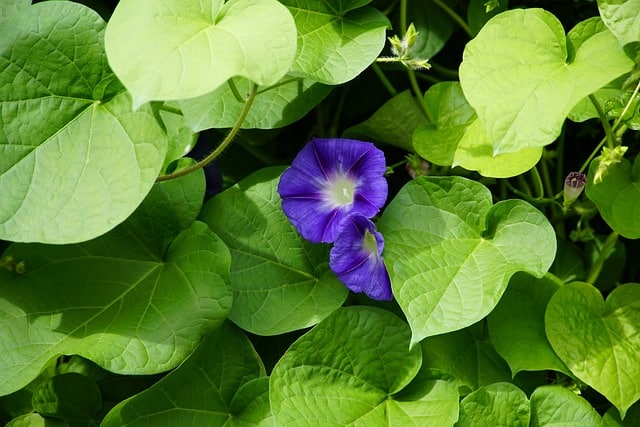
Dwarf morning glory, scientifically known as Evolvulus, introduces unique blue flowers that are often more compact and easier to manage than their taller relatives. These hardy plants are perfect for ground cover and can create a stunning carpet of blue blooms in garden beds or hanging containers.
A major advantage of dwarf morning glory is its heat resistance and drought tolerance, allowing it to thrive in various conditions without much fuss. The flowers are known for their brilliant, tubular forms and often bloom throughout the growing season, adding delightful splashes of color. They symbolize warmth and youthfulness, making them wonderful additions to sunny patios or gardens where positivity and joy are cultivated.
Iris
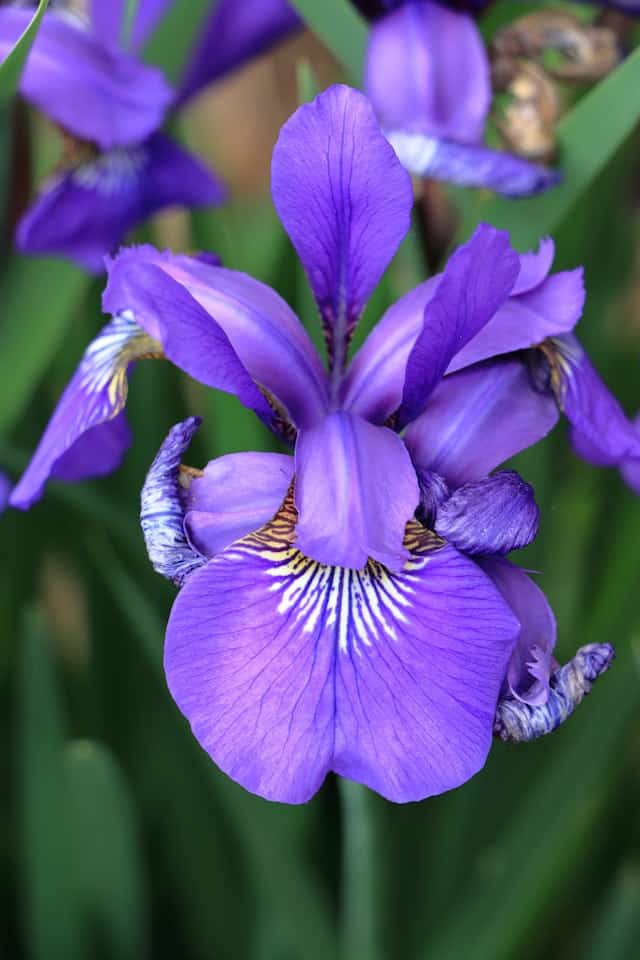
Iris flowers boast some of the most beautiful blue shades in the realm of flora. Known for their intricate petals and distinct shapes, irises are rich in variety, with numerous species and hybrids available. These perennial favorites can be found in gardens worldwide, thriving in sunny spots, and prefer well-drained soils.
Irises are not only visually stunning but also steeped in cultural significance. In many traditions, they symbolize courage, wisdom, and hope. The Greek goddess Iris was a messenger, lending the flower its connection to communication and sending messages. Myriad species, including the bearded iris and Siberian iris, showcase shades of blue, providing gardeners with a delightful array to choose from.
Lobelia
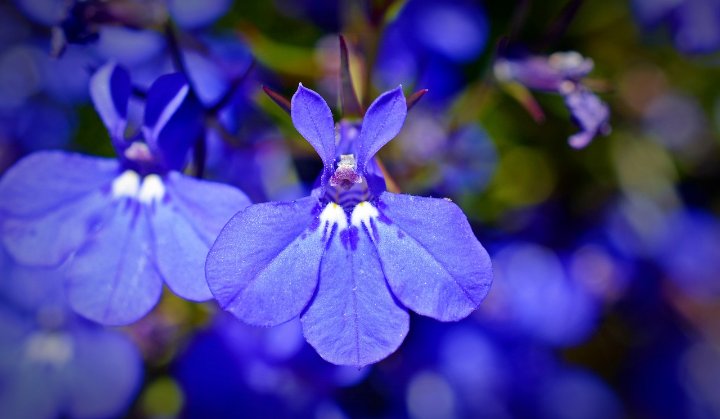
Lobelia is another charming blue flower that captivates with cascades of delicate, vibrant blooms. Available in various forms, including trailing varieties, lobelia thrives in cooler climates and is a popular choice for hanging baskets or as a ground cover.
The trailing varieties are especially prized for their ability to create billowy mounds of blue flowers, draping over pots and structures beautifully. These flowers do best in partial to full sun and require moist, well-drained soil. Lobelia symbolizes loyalty and affection, making them meaningful additions to gardens where relationships and bonds flourish.
Gentian
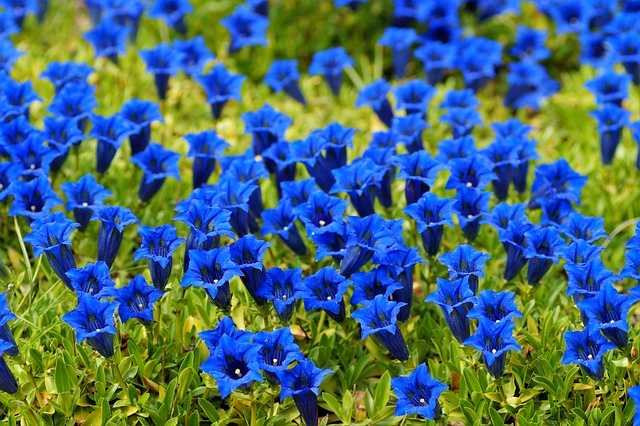
Gentians are lesser-known but no less mesmerizing blue flowers that thrive in temperate regions around the world. These perennials tend to grow in rocky or alpine environments, showcasing their delicate, trumpet-shaped blooms that combine vibrant blues with rich greens of surrounding foliage.
Gentians prefer well-drained soils and can tolerate some shade but often thrive in full sun. Their striking colors and unique shapes have earned them a special place in many gardens, often as a focal point. Symbolically, gentians stand for sincerity and understanding, making them a thoughtful gift for a cherished friend or loved one.
Love-In-A-Mist

Love-in-a-mist, or Nigella damascena, is an exquisite flower with stunning blue petals that seem to dance in the breeze. These annuals are unique due to their distinct foliage, which resembles filigree or lace, creating an ethereal appearance in gardens.
Love-in-a-mist is relatively easy to grow, preferring well-drained soil in full sun to partial shade. Its unusual blossoms and attractive, lacy foliage make it a remarkable addition to floral arrangements. The flower’s name embodies its romantic symbolism, representing love and devotion, which makes it an ideal presence in gardens intended for romantic gatherings or celebrations.
Brunnera
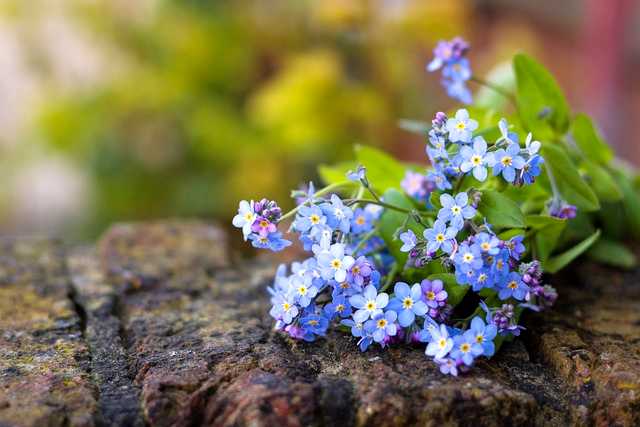
Brunnera, commonly known as false forget-me-nots, brings clusters of tiny, dazzling blue flowers that remind us of the beloved forget-me-not. This perennial plant is especially beloved for its ability to thrive in shady areas where many flowers struggle to bloom.
Brunnera is highly regarded for its heart-shaped leaves that often showcase striking white variegation. The delicate blue flowers arrive in spring and provide a delightful contrast to the lush green foliage. This flower is frequently associated with remembrance, making it a meaningful tribute in gardens designed for reflection or in memory of loved ones.
Globe Thistle
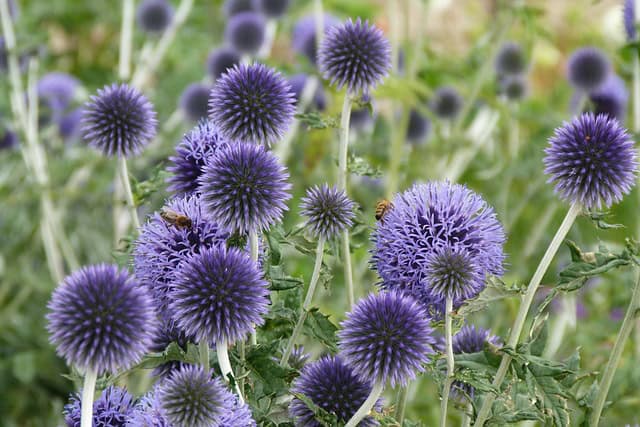
Globe thistle, with its spherical blue flower heads and strong stems, offers an eye-catching addition to any garden. This perennial plant is resilient and drought-tolerant, thriving in well-drained soils and attracting a variety of pollinators, including bees and butterflies.
The distinctive blue blooms of globe thistle stand out even in mixed garden settings, often serving as a standout feature among other plants. Symbolically, globe thistle embodies strength and determination, making them a powerful addition to areas meant for inspiration and resilience. With their long-lasting blooms, globe thistles can also add structure and texture to dried arrangements.
Delphinium
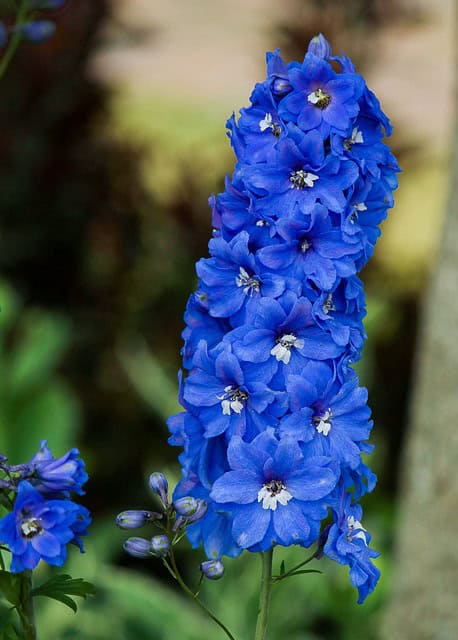
Delphinium flowers are renowned for their tall spires adorned with vibrant blue blooms. These stunning perennials flourish in garden borders, providing a vertical element bursting with color. Delphiniums prefer sunny spots and well-drained soils, thriving in temperate climates.
They hold a special distinction in the landscape due to their impressive height and abundance of flowers, creating breathtaking displays. Symbolically, delphiniums represent love and positivity, which makes them fantastic choices for uplifting or celebratory occasions such as weddings and parties. Their various shades of blue, ranging from pastel to deep navy, offer diverse options for gardeners looking to make a bold statement.
False Indigo
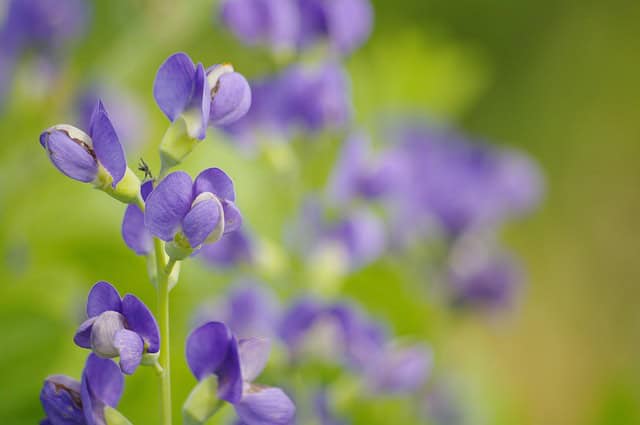
False indigo, or Baptisia, is a woody perennial that features captivating blue flowers arranged in racemes. This plant is a low-maintenance wonder that thrives in sunny areas with well-drained soil, making it an ideal choice for many gardeners.
False indigo’s resilience extends beyond its beauty; it’s known to attract pollinators and improve soil health. The unique beauty and toughness of these plants make them a symbol of enduring love and strength, adding a meaningful touch to gardens dedicated to relationships, growth, and resilience.
Bluebeard

Bluebeard (Caryopteris) captivates with its rich blue clusters of small flowers that bloom during the late summer to fall. This entertaining shrub draws hummingbirds and butterflies, making it an excellent addition to wildlife gardens.
Bluebeard loves sunny locations and shows great adaptability to various soil types, requiring minimal maintenance once established. Its beautiful blooms and fragrant foliage make it stand out, often serving as a delightful contrast to fall colors. Symbolically, bluebeard embodies happiness and tranquility, making it a lovely addition to spaces meant for relaxation and enjoyment.
Virginia Bluebells
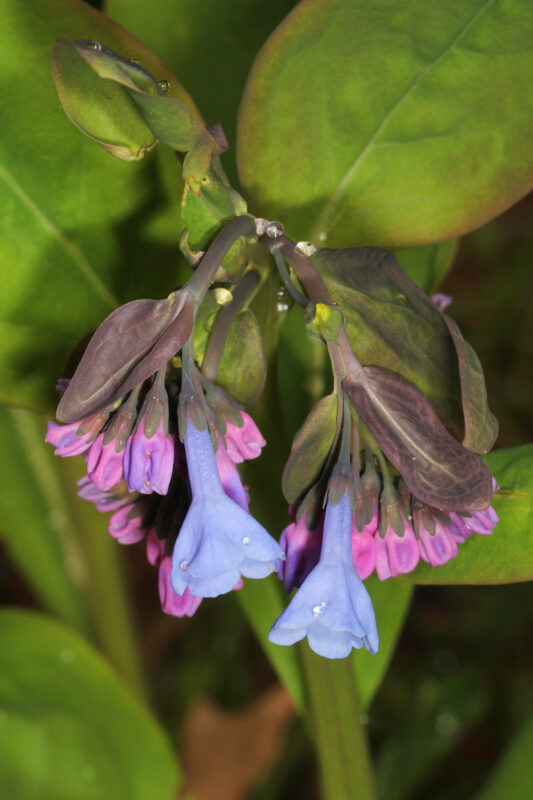
Virginia bluebells (Mertensia virginica) offer delicate, bell-shaped blue flowers that grace the woodlands in spring. These perennial plants thrive in moist, well-drained soils and can handle partial shade beautifully, often creating charming carpeting of blue during their bloom season.
Their stunning blooms fade as summer approaches, allowing other perennials to take center stage, making them an excellent addition to the seasonal garden landscape. Virginia bluebells are often associated with new beginnings and renewal, stirring feelings of nostalgia for springtime’s return, making them a fitting choice for gardens celebrating the changing seasons.
Bellflower
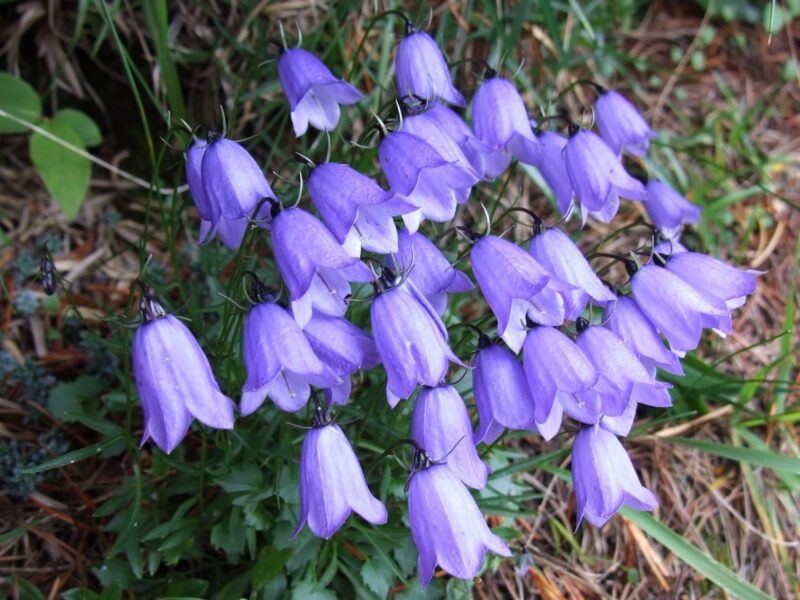
Bellflowers are enchanting additions to garden beds, with their graceful, bell-shaped blooms coming in various shades of blue. These versatile perennials thrive in both sunny and partially shaded locations, adapting well to different soil types.
The blooms not only attract bees and butterflies but also draw attention for their charming shape and color. Bellflowers symbolize kindness and gratitude, making them thoughtful gifts or enhancements to gardens that bring messages of appreciation and friendship. They can be used for borders or as ground cover, offering a textured layer of blue that harmonizes beautifully with other garden elements.
Aster
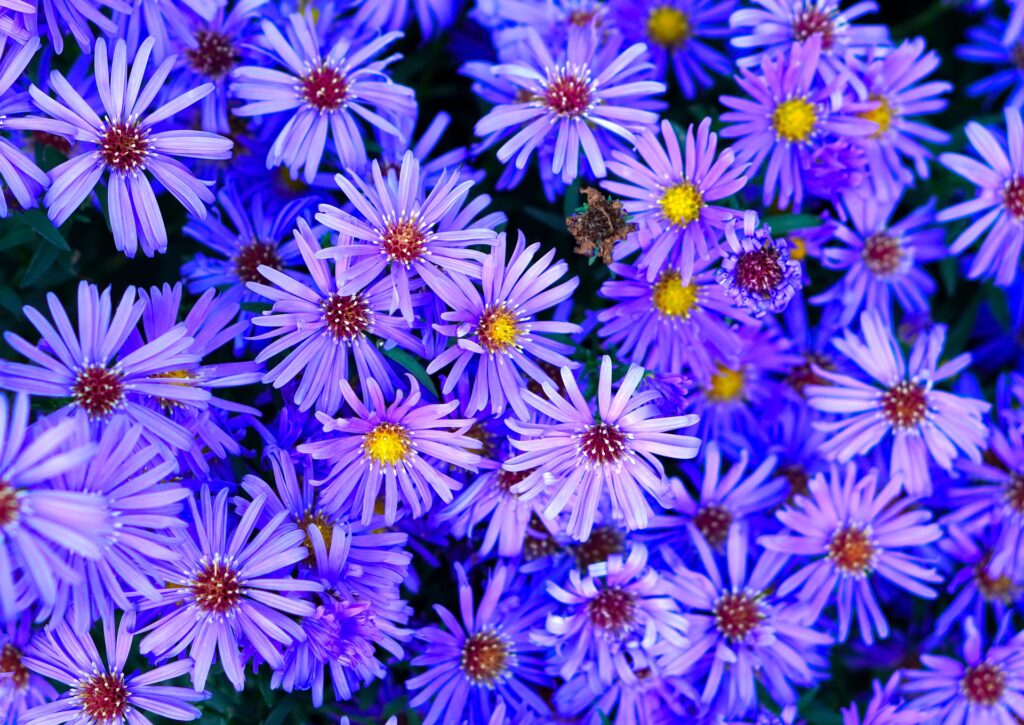
Asters are beloved for their late summer blooms, often providing a dazzling splash of blue when many other flowers have begun to fade. These perennial plants thrive in full sun and prefer well-drained soils, making them a reliable choice for seasonal beauty.
The star-like clusters of blue flowers can vary significantly in size and shape, providing versatility in garden designs. Asters are often associated with elegance and love, making them a thoughtful gift for significant others or friends. They also attract numerous pollinators, contributing to the health of your garden ecosystem while leaving a lasting impression with their vibrant hues.
Spike Speedwell
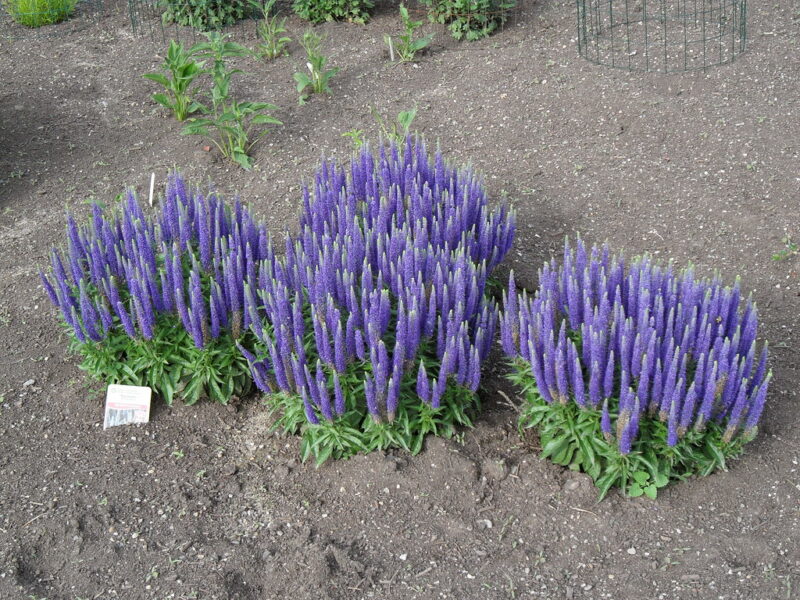
Spike speedwell or Veronica spicata, brings tall spikes of blue flowers that grace gardens and borders. These hardy perennial plants thrive in sunny to partially shaded areas, preferring well-drained soil.
Known for their attractive, narrow leaves and long-lasting blue blossoms, spike speedwell is also drought-resistant, making them suitable for low-maintenance gardens. This flower signifies fidelity and allegiance, often representing a love that stands the test of time. Their striking vertical growth habit adds structure to garden designs, ensuring that the blue flowers make a strong visual statement.
Felicia Daisy
Felicia daisies are little treasures, featuring charming blue petals framed by sunny yellow centers. These annual plants are native to South Africa and thrive in warm conditions, making them lovely additions to containers, borders, or as ground covers.
Known for their cheerful appearance, Felicia daisies are also easy to care for, preferring well-drained soil and full sun. Their ability to attract pollinators while delivering delightful colors makes them a well-rounded flower for enhancing garden aesthetics pleasantly and vibrantly.


